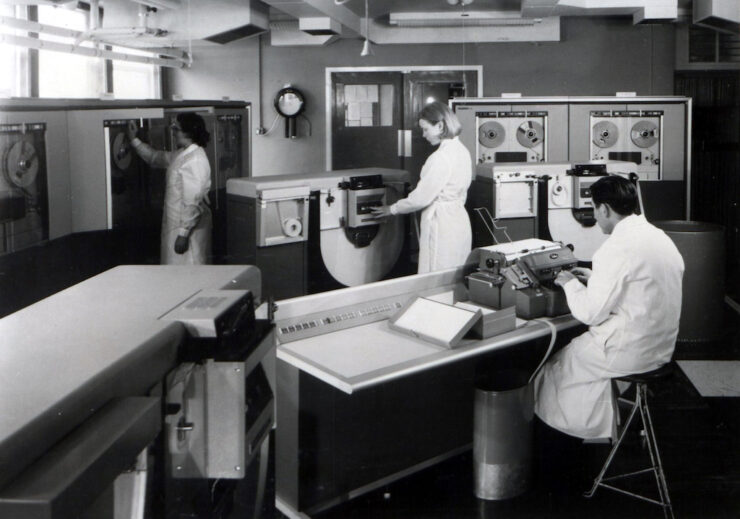Information Technology plays a crucial role in science and engineering, and many of the interviewees for Archives of IT are at the forefront of IT research and development. Below are some highlights on this theme from our archive.
Research and Development in Government
One example is The Meteorological Office, or Met Office for short. It was established in 1854 and issued its first storm warning in 1861. Today it is known as the United Kingdom’s national meteorological service and is at the forefront of critical weather services and world-leading climate science. The Met Office acquired its first computer in 1951 and ever since, IT has been and intrinsic part of its work.

Chris Little has been involved in many of the most important developments in weather and climate modelling over that time and works at the Met Office on international collaboration projects. In this clip from his interview, Chris talks about the changes in computing that happened at the Met Office in the 1970s, and how it significantly sped up processes:
Dianne Murray is one of our interviewees who worked at the National Physical Laboratory (NPL), first run by the UK government, but now contracted out to Serco. From the early 1980s, Dianne worked on a project that became Human Computer Interaction (HCI). With her colleagues at NPL, Dianne set up the HCI Group, and then the British Computer Society (BCS) HCI Group, which brought together this pioneering research. In this clip she talks about this work, their first meeting in a London pub and starting their newsletter:
Research and Industry
Muffy Calder OBE called herself a Scientist, but later in her career realised she was actually an Engineer. Muffy explains
“I do theoretical computer science, I do formal modelling but I’m always trying to do it with industry, with other people. That’s why I’ve gone out to DEC in Silicon valley, why I went to BT. I’ve always looked for application areas.”
Muffy has applied her research to communications networks for BT and in cancer research at the Beatson Institute for Cancer Research. Find out more about her career spanning health, academia and industry in her interview.

Dr Hermann Hauser was a Physicist with an entrepreneurial streak. He went on from a research fellowship at the Cavendish Laboratory to founding Acorn Computers and the BBC Micro, working in the research and development department of Olivetti once it bought out Acorn, something he describes as ‘the best three years of my life’. After this he moved on to ARM, a company that revolutionised the mobile phone industry. Find out more about his work in his interview.

In this clip, Sir Peter Knight talks about the research happening in the UK in the 1960s and 1970s. He talks about Herman’s work and the work of other entrepreneurial innovators such as Cyril Hilsum, pioneer in liquid-crystal flat-panel displays. Sir Peter mentions the challenge of harnessing this work to the advantage of the UK, and mentions a few inventions where it took another country to harness their true potential: